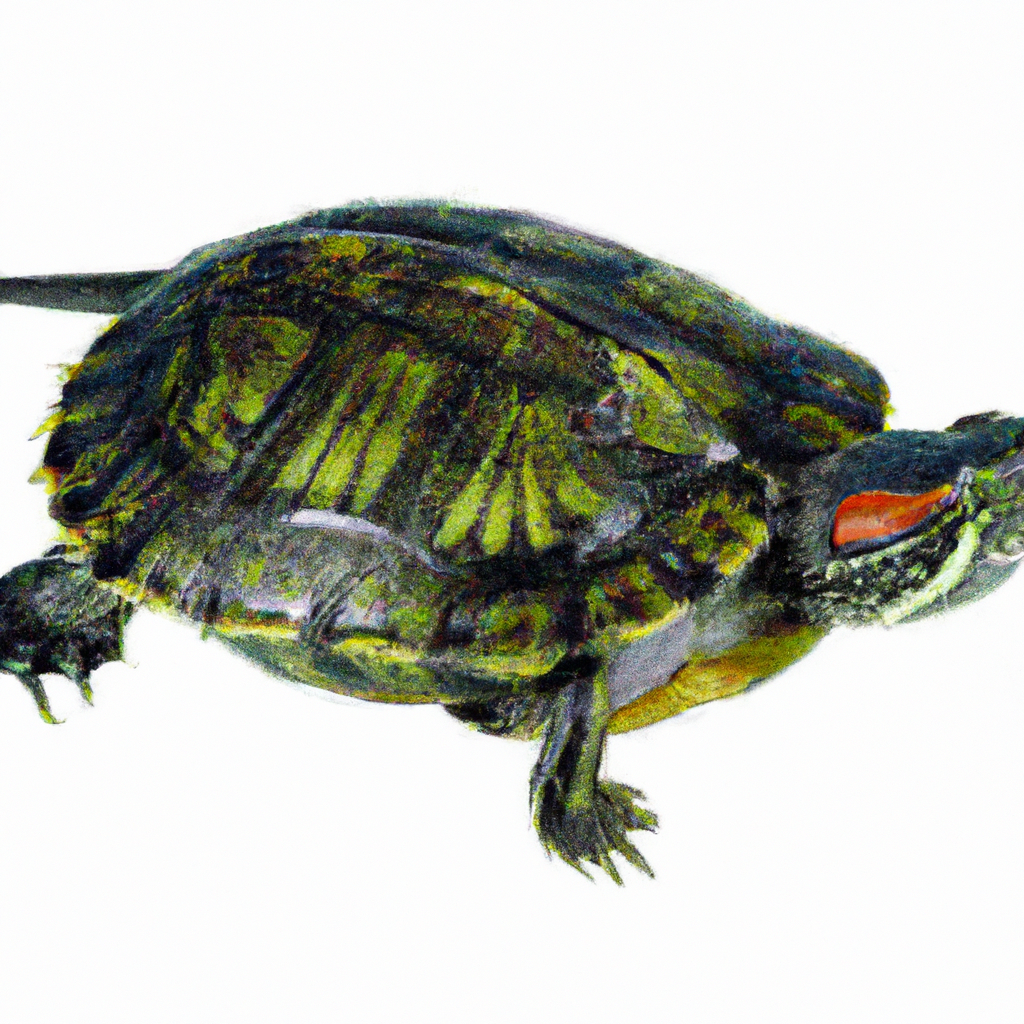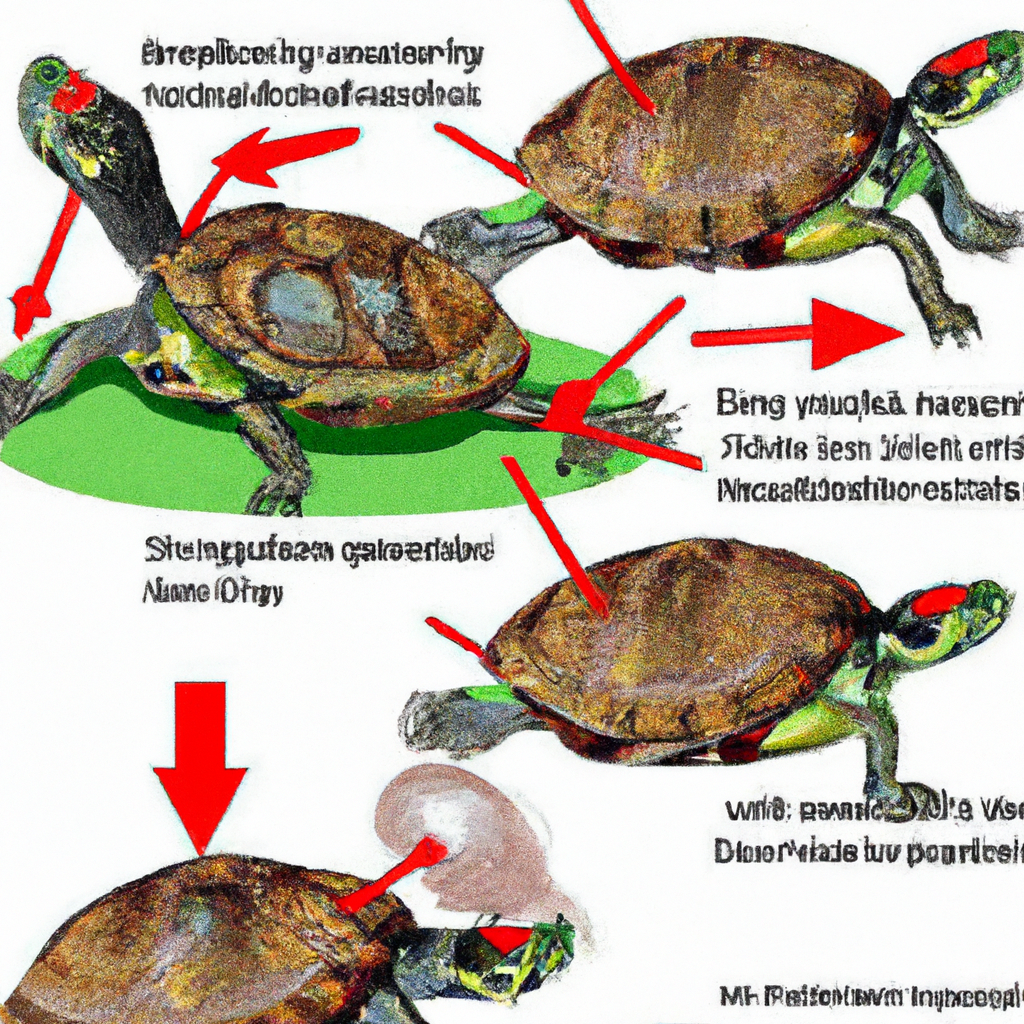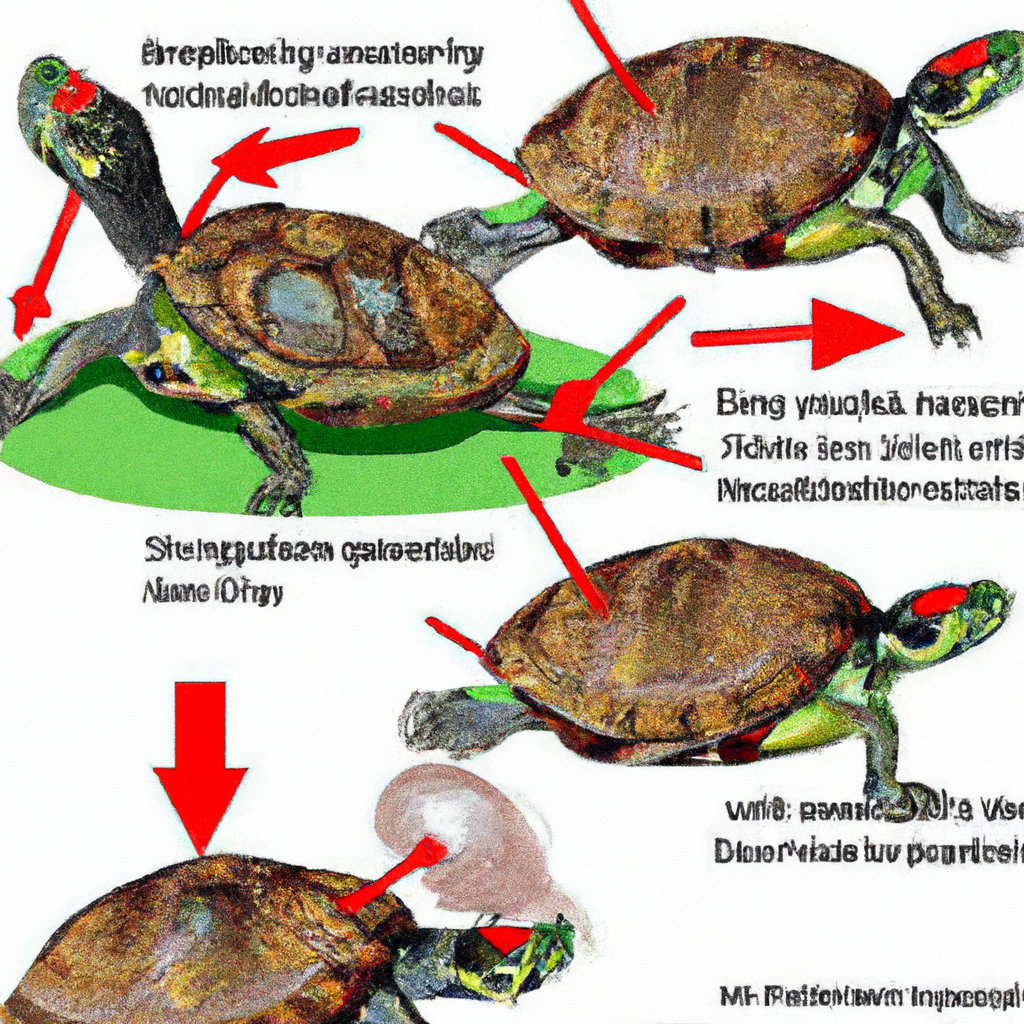Imagine having your very own pet turtle, and not just any turtle, but a Red-Eared Slider. These charismatic and beautiful creatures have stolen the hearts of many pet owners around the world. In this article, we will shine a spotlight on the Red-Eared Slider and provide you with valuable insights into their care and maintenance. From creating the perfect habitat to ensuring a balanced diet, we’ll cover all the essentials to ensure that your Red-Eared Slider thrives under your loving care. So, let’s dive in and discover everything you need to know about these amazing turtles!

Physical Characteristics
The Red-Eared Slider is one of the most popular turtle species kept as pets. At first glance, you’ll notice its vibrant red stripe on each side of its head, which gives it its name. They have olive-green to dark green skin with bright yellow stripes along the sides of their bodies. As they age, their colors tend to fade and turn duller. Males typically have longer claws and tails than females, and they also have a concave plastron, which aids in mating.
These turtles have a sturdy and robust body, with a shell known as the carapace. The carapace is smooth, oval-shaped, and made up of a series of scutes or plates. On average, adults can reach a shell length of 6 to 8 inches, but some can even grow up to 12 inches or more. The female Red-Eared Slider tends to be slightly larger than the male.
Natural Habitat
In the wild, Red-Eared Sliders are native to the southern United States, particularly in regions with slow-moving or still freshwater bodies such as ponds, lakes, marshes, and rivers. They prefer environments with plenty of aquatic vegetation, as they use it for shelter and foraging. These turtles are also great climbers and can often be found basking on rocks, logs, or fallen trees near the water’s edge.
Life Span
With proper care and a suitable environment, Red-Eared Sliders can live for 20 to 30 years or more. Some individuals have been known to live well into their 40s and 50s. Ensuring a balanced diet, clean water, and proper habitat conditions are key to helping your turtle live a long and healthy life.
Diet and Feeding
Red-Eared Sliders are omnivorous, meaning they eat both plant matter and animal protein. In the wild, their diet consists of aquatic plants, algae, small fish, insects, worms, and snails. As pets, they can be fed a variety of foods such as commercial turtle pellets, leafy greens like lettuce and kale, fruits, and live or frozen protein sources like fish, shrimp, and earthworms.
It’s important to provide a balanced diet that mimics their natural food sources. Younger turtles should be fed more protein-rich foods, while adults require a larger proportion of plant matter. Remember to remove any uneaten food from the tank to maintain water quality.

Tank Setup
Setting up an appropriate tank for your Red-Eared Slider is crucial for its overall well-being. A tank size of at least 75 gallons is recommended for a single adult, with an additional 10 gallons for each additional turtle. The tank should have a secure lid to prevent escapes and protection from other pets or curious children.
A basking area is essential, as Red-Eared Sliders require both aquatic and dry land environments. You can create a basking area using rocks, platforms, or floating docks. UVB lighting is necessary for their overall health, as it helps them metabolize calcium and prevent shell deformities. Ensure the tank also has a water filter to maintain water quality and a heater to keep the water temperature stable.
Water Quality
Clean and high-quality water is a crucial factor in the well-being of your Red-Eared Slider. The water should be kept at a temperature between 75 to 85 degrees Fahrenheit (24 to 29 degrees Celsius). Regularly monitor the water pH levels, which should be around 6.5 to 7.5.
A filtration system is necessary to remove waste, debris, and harmful chemicals from the water. It is recommended to perform partial water changes of around 25% every two to three weeks. This helps maintain water quality and prevents buildup of harmful substances.
Temperature and Lighting
Maintaining suitable temperatures is vital for your Red-Eared Slider’s health. Besides the water temperature mentioned earlier, you should also provide a basking spot with a temperature around 90 degrees Fahrenheit (32 degrees Celsius). This can be achieved using a heat lamp or a ceramic heating element.
UVB lighting is crucial for the synthesis of vitamin D3, which aids in proper calcium metabolism and shell health. Install a UVB bulb in the tank, ensuring it offers the appropriate spectrum and intensity. Replace the bulb every six to eight months to maintain its effectiveness.
Handling and Interaction
Red-Eared Sliders are not known to be particularly fond of being handled, and excessive handling can cause stress and discomfort. It is best to minimize handling to necessary activities such as tank cleaning, health checks, and emergencies. When handling your turtle, ensure your hands are clean and free from any strong scents, as turtles have a keen sense of smell.
Avoid grabbing or squeezing the turtle, as this can cause injury or distress. Instead, gently support the turtle’s body while allowing them to move their head and limbs freely. Supervised interaction outside of the tank can also be enjoyable for both you and your turtle, as long as a secure and safe environment is provided.
Health Concerns
Keeping a close eye on your Red-Eared Slider’s health is essential. Some common health concerns to watch out for include respiratory infections, shell rot, eye infections, and nutritional deficiencies. Any signs of abnormal behaviors, loss of appetite, lethargy, swelling, or discoloration on the shell should be addressed promptly by a veterinarian experienced in reptile care.
Maintaining proper nutrition, water quality, and temperature can help prevent many health issues. Regular check-ups with a veterinarian are recommended to ensure your turtle’s ongoing well-being.
Breeding and Reproduction
Breeding Red-Eared Sliders is a complex process that requires specialized knowledge and equipment. Female turtles reach sexual maturity around 5 to 7 years of age, while males can be ready to breed as early as 2 to 3 years. Breeding usually occurs in the spring or early summer, with females laying eggs in sandy soil or a suitable nesting substrate.
Creating optimal conditions for breeding, such as appropriate temperature and humidity levels, is crucial. Female turtles may require a separate nesting area to lay their eggs, which should be carefully monitored to ensure successful incubation. If breeding is not your intention, it is important to ensure that your male and female turtles are kept separate to prevent unwanted breeding and potential stress for the female.
In conclusion, the Red-Eared Slider is a striking and fascinating turtle species that requires proper care and maintenance to thrive. By providing a suitable habitat, a balanced diet, and regular veterinary care, you can enjoy the companionship of your Red-Eared Slider for many years to come. Remember to always do thorough research and consult with experts to ensure the best possible care for your turtle.
